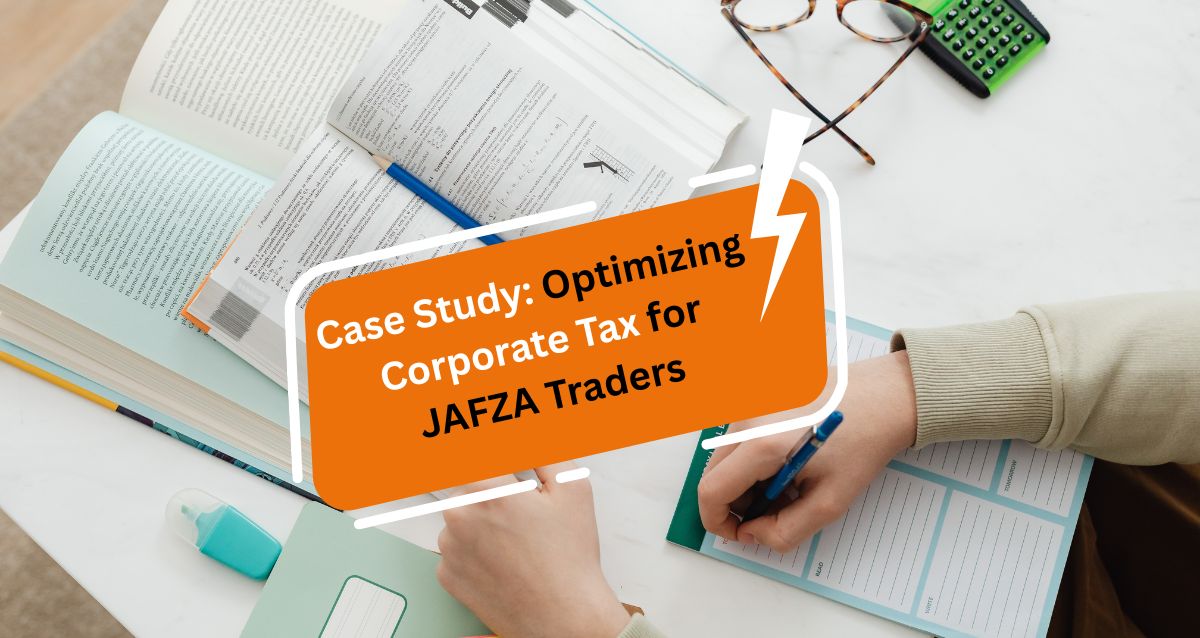Case Study: Optimizing Corporate Tax Position for a JAFZA-Based Coal Trading Company
Client Background
Our client is engaged in cross-border coal trading. The business model explained was as below;
- The entity is registered in Jebel Ali Free Zone Authority (JAFZA)
- The raw coal is purchased from Indonesia.
- The coal is being exported to India without entering to UAE.
- The customer in India is a factory that uses coal to generate thermal power to produce steel products.
Initial advisory received by the client from a third-party tax advisor
The client was advised to consider themselves as are Qualifying Free Zone Person (QFZP) as per Ministerial Decision No.265 of 2023 under the qualifying activity of Distribution of Goods or Material in or from the Designated Zone, whereby the entity must satisfy;
a) Company established in the Designated Zone - This condition is satisfied since the company is registered in Jebel Ali Free Zone Authority (JAFZA)
b) The entity is acting as a distributor. Means, the customers are not the end user of the goods supplied by free zone person.
c) Adequate substance required. This condition is satisfied because the company has adequate substance by way of full-time qualified employees, operating expenditures and capital expenditures in the designated zone and core income-generating activities are conducted in the Designated Zone.
d) Audited Financial Statements are required to be prepared and submitted. This condition is satisfied as the company is conducting an annual audit of its financial statements.
e) Transfer Pricing Compliances- This condition is satisfied. The company has no related party transactions and connected person payment (salary to key managerial person) was at Arm's Length and proper documentations were kept.
f) De minimis threshold- This condition is satisfied. The company's non-qualifying revenue for the year 2024 is below 5% of the total revenue and below AED 5 million.
As per Ministerial Decision No.265 of 2023, the Free Zone Person who violates any of the above conditions will cease to claim the benefits for the Qualifying Free Zone person in the year of violation and the 4 coming tax years.
Analysis of the case done by Flying Colour Tax Consultant
We have reviewed the consultation report received by the client from the third-party service provider. We cross-verified the conditions to become a qualifying free zone person under the UAE Corporate Tax Law.
Flying Colour Tax Consultant advisor was keen to know about the end-user concept in the business of our client. Below points were taken into consideration;
1) The customer is using the coal to produce energy.
2) The energy is used in the manufacturing process of steel.
3) The Indian factory has consumed the coal for manufacturing purposes.
When did the Indian factory consider a non-end user?
A) When the Indian factory resells the coal to a wholesaler or retailer or customer.
B) When the Indian factory produces energy using coal, and the energy is sold by the factory ( not the products sold, which are produced using the energy from coal)
Result of analysis by Flying Colour Tax Consultant
We concluded that the customer (Indian Factory) is the end user of the coal, which is sold by our client. Thus, the JAFZA Company will not qualify as a Qualifying Free Zone Person under the Qualifying Activity "Distribution of Goods or Materials in or from Designated Zone".
Solution provided to handle the situation

We advised the client to remain as a Qualifying Free Zone Person under a different Qualifying Activity "Trading of Qualifying Commodities" as per Article 3 (c), Ministerial Decision No.265 of 2023.
When the company is declared as a Qualifying Free Zone Person by undertaking Trading of Qualifying Commodities as relevant activity, below are the major points to be noted;
1) The entity is shifting the definition of distributor to trader. This allows the JAFZA Company to sell the products to the end consumer, which is an Indian factory.
2) The entity should deal with Qualifying Commodities. Qualifying Commodities are;
a. Metals, Minerals (Coal is a mineral) or agricultural products
b. Which are in raw form- Coal sold is in raw form
c. The commodity is traded as per the standards of the recognised stock exchange. Coal has a recognised Stock Exchange where it is generally traded.
By reclassifying the client's activity under Trading of Qualifying Commodities, we secured a 0% Corporate Tax rate despite the end-user nature of their transactions. This strategic pivot, grounded in UAE Corporate Tax regulations, ensured full compliance while maximizing tax efficiency. The client's JAFZA entity now serves as a benchmark for cross-border commodity traders leveraging UAE Free Zone benefits.
"The UAE's Corporate Tax regime rewards businesses that align their operations with clearly defined qualifying activities. This case underscores the importance of meticulous activity classification and regulatory compliance."
Who are we?
Flying Colour Tax Consultant LLC is a registered Tax Agency which is approved by the UAE Federal Tax Authority (Tax Agency Number: - 30008296). We manage the complex tax matters for our clients and execute all the UAE tax-related matters. We have been in the UAE market for over a period of 21 years and have a team of 180+ professionals, and have managed to serve 18000+ happy clients.
To learn more about Case Study: Optimizing Corporate Tax for JAFZA Traders, book a free consultation with one of the Flyingcolour team advisors.
Disclaimer: The information provided in this blog is based on our understanding of current tax laws and regulations. It is intended for general informational purposes only and does not constitute professional tax advice, consultation, or representation. The author and publisher are not responsible for any errors or omissions, or for any actions taken based on the information contained in this blog.

